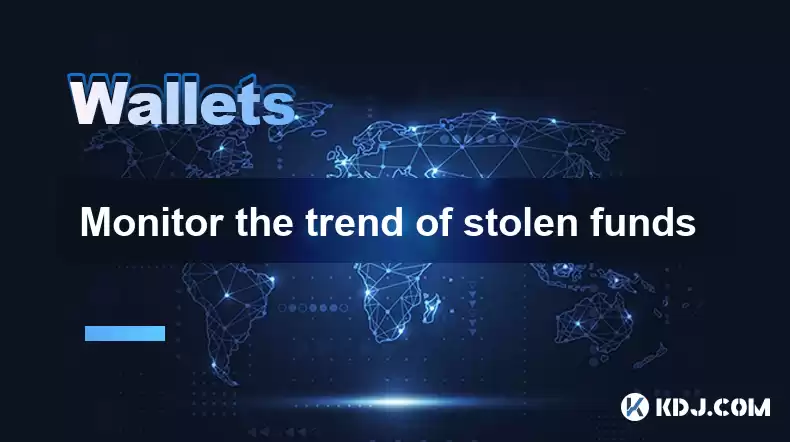-
 Bitcoin
Bitcoin $117500
-0.66% -
 Ethereum
Ethereum $3760
-1.24% -
 XRP
XRP $3.087
-2.54% -
 Tether USDt
Tether USDt $0.9999
-0.01% -
 BNB
BNB $803.6
-4.03% -
 Solana
Solana $180.3
-4.15% -
 USDC
USDC $0.9998
-0.01% -
 Dogecoin
Dogecoin $0.2218
-4.92% -
 TRON
TRON $0.3366
3.71% -
 Cardano
Cardano $0.7785
-3.73% -
 Hyperliquid
Hyperliquid $42.90
-4.75% -
 Sui
Sui $3.797
-7.45% -
 Stellar
Stellar $0.4165
-2.32% -
 Chainlink
Chainlink $17.65
-4.17% -
 Bitcoin Cash
Bitcoin Cash $561.0
-3.86% -
 Hedera
Hedera $0.2611
-4.54% -
 Avalanche
Avalanche $24.33
-7.02% -
 UNUS SED LEO
UNUS SED LEO $8.972
0.06% -
 Litecoin
Litecoin $107.6
-2.79% -
 Toncoin
Toncoin $3.254
-1.84% -
 Shiba Inu
Shiba Inu $0.00001306
-4.69% -
 Ethena USDe
Ethena USDe $1.001
0.00% -
 Uniswap
Uniswap $10.10
-4.83% -
 Polkadot
Polkadot $3.902
-4.63% -
 Monero
Monero $315.1
-2.57% -
 Dai
Dai $1.000
0.02% -
 Bitget Token
Bitget Token $4.499
-2.53% -
 Pepe
Pepe $0.00001145
-7.38% -
 Cronos
Cronos $0.1479
6.07% -
 Aave
Aave $281.3
-4.07%
Monitor the trend of stolen funds
By implementing a comprehensive monitoring framework, law enforcement and financial institutions can effectively track stolen funds on blockchains, disrupt illicit activities, and enhance the security of the crypto ecosystem.
Feb 22, 2025 at 11:12 pm

Monitor the Trend of Stolen Funds: A Comprehensive Guide
Key Points:
- Track Stolen Funds on Blockchains: Utilize blockchain explorers to monitor illicit transactions and identify tainted assets.
- Identify Suspicious Activity: Monitor on-chain data for unusual patterns, large or frequent transfers, and connections with known illicit actors.
- Use Transaction Analytics Tools: Employ advanced analytics tools to analyze on-chain movements and identify potential red flags.
- Cooperate with Law Enforcement: Collaborate with authorities to track stolen funds, freeze assets, and investigate illicit activities.
- Implement AML/KYC Policies: Establish strong AML/KYC measures to prevent money laundering and the movement of stolen funds.
- Educate Users on Crypto Security: Raise awareness of best practices for securing crypto assets and reducing vulnerability to theft.
- Monitor Fiat Off-Ramp Activity: Track fiat currency exchanges and on-ramp/off-ramp services to identify suspicious withdrawals.
Steps to Monitor Stolen Funds:
1. Track Stolen Funds on Blockchains
- Utilize blockchain explorers such as Etherscan, BscScan, and Polygonscan to trace stolen funds.
- Search for transaction hashes, wallet addresses, or specific tokens associated with the theft.
- Identify tainted assets by analyzing transaction history and connections to illicit actors.
2. Identify Suspicious Activity
- Monitor on-chain data for large or frequent transfers that deviate from typical patterns.
- Check for connections between addresses involved in the theft and known illicit actors.
- Be vigilant for unusual or suspicious activity, such as coin hopping or constant swapping.
3. Use Transaction Analytics Tools
- Utilize specialized transaction analytics tools like Chainalysis or Elliptic to identify red flags.
- Analyze transaction data to identify clusters, patterns, and suspicious connections.
- Employ machine learning algorithms to detect hidden illicit activity and monitor trends.
4. Cooperate with Law Enforcement
- Collaborate with law enforcement agencies to track stolen funds, freeze assets, and investigate illicit activities.
- Provide detailed reports, transaction data, and wallet information to assist investigations.
- Coordinate efforts to disrupt illicit networks and recover stolen assets.
5. Implement AML/KYC Policies
- Establish strict AML/KYC (Anti-Money Laundering/Know Your Customer) policies to prevent stolen funds from entering the system.
- Verify user identities, monitor transactions, and report suspicious activities to regulators.
- Implement automated screening systems to flag and investigate high-risk transactions.
6. Educate Users on Crypto Security
- Conduct awareness campaigns to educate users about crypto security best practices.
- Promote the use of strong passwords, multi-factor authentication, and hardware wallets.
- Explain the risks of phishing attacks, scam websites, and social engineering.
7. Monitor Fiat Off-Ramp Activity
- Track cryptocurrency exchanges and fiat off-ramp services to identify potential withdrawals of stolen funds.
- Collaborate with on-ramp/off-ramp providers to flag and investigate suspicious activity.
- Monitor fiat withdrawals that align with patterns of illicit transactions.
FAQs:
Q: What are the most common methods used to track stolen funds on blockchains?
- Transaction hashes, wallet addresses, and token analysis are commonly used to trace stolen funds on blockchains.
Q: What are the benefits of using transaction analytics tools to monitor stolen funds?
- These tools provide advanced algorithms and capabilities to detect hidden illicit activities and monitor trends.
Q: What role does law enforcement play in monitoring stolen funds?
- Law enforcement agencies assist in tracking stolen funds, freezing assets, and conducting investigations into illicit activities.
Q: How can exchanges and fiat off-ramp services contribute to monitoring stolen funds?
- Exchanges and off-ramp services can flag and investigate suspicious transactions, monitor fiat withdrawals, and collaborate with authorities.
Q: What are the best practices for educating users on crypto security to prevent theft?
- Promote strong passwords, multi-factor authentication, hardware wallets, and awareness of phishing and social engineering scams.
Disclaimer:info@kdj.com
The information provided is not trading advice. kdj.com does not assume any responsibility for any investments made based on the information provided in this article. Cryptocurrencies are highly volatile and it is highly recommended that you invest with caution after thorough research!
If you believe that the content used on this website infringes your copyright, please contact us immediately (info@kdj.com) and we will delete it promptly.
- Naoris Protocol's $NAORIS: A Quantum Leap in Cybersecurity
- 2025-07-30 04:30:13
- Bitcoin, Tokenized Trading, and Crypto News: A New Yorker's Take on the Future of Finance
- 2025-07-30 04:30:13
- Trump Coin (TRUMP): Technical Analysis and Cryptocurrency Speculation
- 2025-07-30 02:50:13
- Snorter Presale: How This Solana Bot Could Spark the Next Crypto Explosion
- 2025-07-30 03:30:13
- BlockDAG, X1 App, and PEPE Rebound: The Crypto Trio Turning Heads
- 2025-07-30 01:30:13
- Solana Price Analysis & 2025 Prediction: Can SOL Outpace the Underdog?
- 2025-07-30 01:30:13
Related knowledge

How to bridge assets on Coinbase Wallet
Jul 27,2025 at 01:14am
What Is Asset Bridging in the Context of Coinbase Wallet?Bridging assets refers to the process of transferring tokens from one blockchain network to a...

Can I use Coinbase Wallet without a Coinbase account?
Jul 18,2025 at 04:35am
What is Coinbase Wallet?Coinbase Wallet is a self-custodial wallet that allows users to store, send, and receive various cryptocurrencies directly on ...

How to speed up a transaction on Coinbase Wallet
Jul 27,2025 at 07:14am
Understanding Transaction Speed on Coinbase WalletWhen using Coinbase Wallet, users may occasionally encounter delays in transaction confirmations. Th...

Coinbase Wallet "uh oh something went wrong"
Jul 20,2025 at 10:00am
Understanding the Coinbase Wallet Error: 'Uh Oh, Something Went Wrong'If you're a Coinbase Wallet user, encountering the error message 'Uh Oh, Somethi...

How to add Optimism network to Coinbase Wallet
Jul 20,2025 at 05:21am
What is the Optimism Network?The Optimism network is a Layer 2 scaling solution built on top of the Ethereum blockchain. It aims to enhance transactio...

How to add Arbitrum to Coinbase Wallet
Jul 18,2025 at 03:00pm
Understanding Arbitrum and Its Integration with Coinbase WalletArbitrum is a layer-2 scaling solution developed by Offchain Labs to enhance the speed ...

How to bridge assets on Coinbase Wallet
Jul 27,2025 at 01:14am
What Is Asset Bridging in the Context of Coinbase Wallet?Bridging assets refers to the process of transferring tokens from one blockchain network to a...

Can I use Coinbase Wallet without a Coinbase account?
Jul 18,2025 at 04:35am
What is Coinbase Wallet?Coinbase Wallet is a self-custodial wallet that allows users to store, send, and receive various cryptocurrencies directly on ...

How to speed up a transaction on Coinbase Wallet
Jul 27,2025 at 07:14am
Understanding Transaction Speed on Coinbase WalletWhen using Coinbase Wallet, users may occasionally encounter delays in transaction confirmations. Th...

Coinbase Wallet "uh oh something went wrong"
Jul 20,2025 at 10:00am
Understanding the Coinbase Wallet Error: 'Uh Oh, Something Went Wrong'If you're a Coinbase Wallet user, encountering the error message 'Uh Oh, Somethi...

How to add Optimism network to Coinbase Wallet
Jul 20,2025 at 05:21am
What is the Optimism Network?The Optimism network is a Layer 2 scaling solution built on top of the Ethereum blockchain. It aims to enhance transactio...

How to add Arbitrum to Coinbase Wallet
Jul 18,2025 at 03:00pm
Understanding Arbitrum and Its Integration with Coinbase WalletArbitrum is a layer-2 scaling solution developed by Offchain Labs to enhance the speed ...
See all articles

























































































